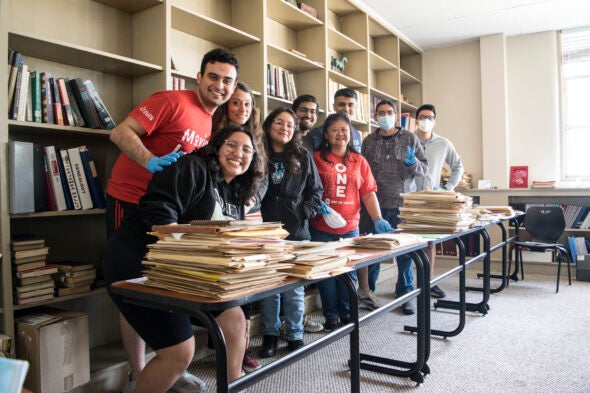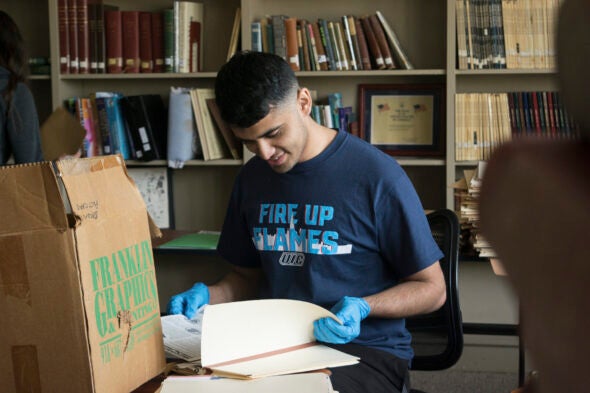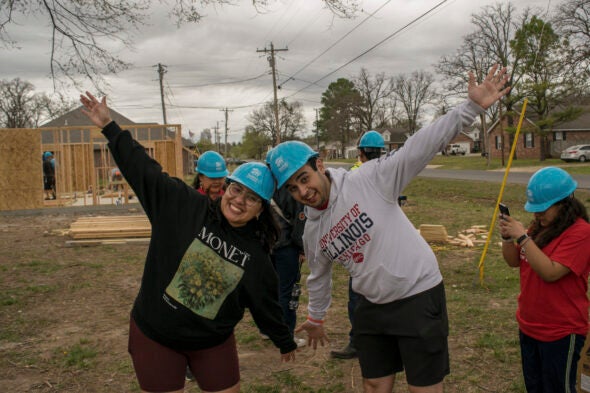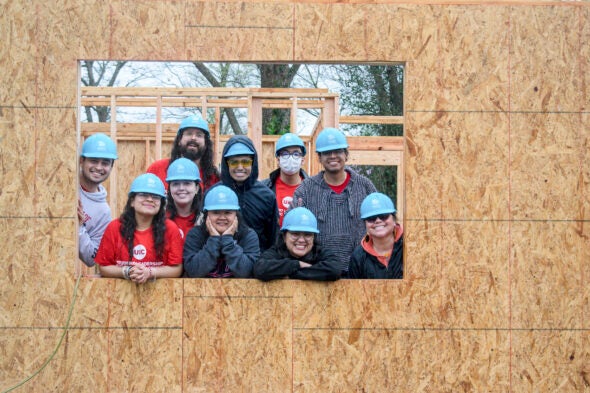Students help out in Native American community for Alternative Spring Break
For a different spring break experience, in March nine University of Illinois Chicago students traveled to Oklahoma for Alternative Spring Break, a program offered by Student Leadership and Civic Engagement to give students the chance to learn about social issues and diverse cultures while participating in service projects.
The students spent the week of March 24 in Tahlequah, Oklahoma, where they immersed themselves in service, cultural learning and community engagement with the United Keetoowah Band of Cherokee Indians and other local organizations.
The week began with a deep dive into Indigenous history and cultural preservation. Students worked alongside professional archivists to catalog Native American artifacts, documents and artwork from the Keetoowah Band, ensuring these culturally significant pieces are properly preserved for future generations. Their hands-on experience provided a unique look at the importance of safeguarding Indigenous heritage.


Exploring an area in Tulsa that was once known as “Black Wall Street” because of its thriving Black-owned businesses, the group walked through the historic Deep Greenwood district, where they engaged in discussions about its economic success, the 1921 Tulsa Race Massacre that took place there and the community’s remarkable resilience. This visit underscored the importance of understanding and honoring Black history in America.
Students also took part in service projects to support Cherokee elders and the community. As part of the Legacy Living elder initiative, they spent a morning loading wood for elders who rely on it to heat their homes and cook.
Another day brought them to the John Hair Cultural Center, where they learned about Keetoowah history, traditions and artistry. Working alongside tribal ethnobotanists, they helped plant a traditional medicine garden, built a river gravel walkway and learned about the significance of Indigenous flora in Cherokee culture. They also cleaned wild onions, an important staple in Cherokee cuisine, further deepening their appreciation for traditional practices.
One of the most rewarding experiences came when students partnered with Habitat for Humanity and nailed, lifted and assembled materials to help build a home for a local family.
To round out their week, the students visited the Cherokee National History Museum, where they explored exhibits that highlighted the Cherokee Nation’s resilience, culture and sovereignty.
For these nine students, Alternative Spring Break was more than a spring break trip; it was a transformative experience. They gained hands-on experience in historic preservation, engaged with community leaders and contributed to meaningful service projects. More importantly, they left with a deeper understanding of Indigenous history and the impact of community service.
“(Alternative Spring Break) was an eye-opening experience that challenged me to think critically about history, culture and service. It was history shared by those who lived it rather than that agreed upon by others,” said fourth-year student Fabiely Roldan. “I’ll carry these lessons with me long after this trip.”


As they returned to Chicago, the students brought back not just memories but a renewed commitment to service, learning and cultural appreciation, proof that spring break can be a time for growth and giving back.
For more opportunities like this, check out Student Leadership and Civic Engagement at slce.uic.edu or follow them on Instagram @UICSLCE.
— Parrama Chouhan, University of Illinois Chicago
